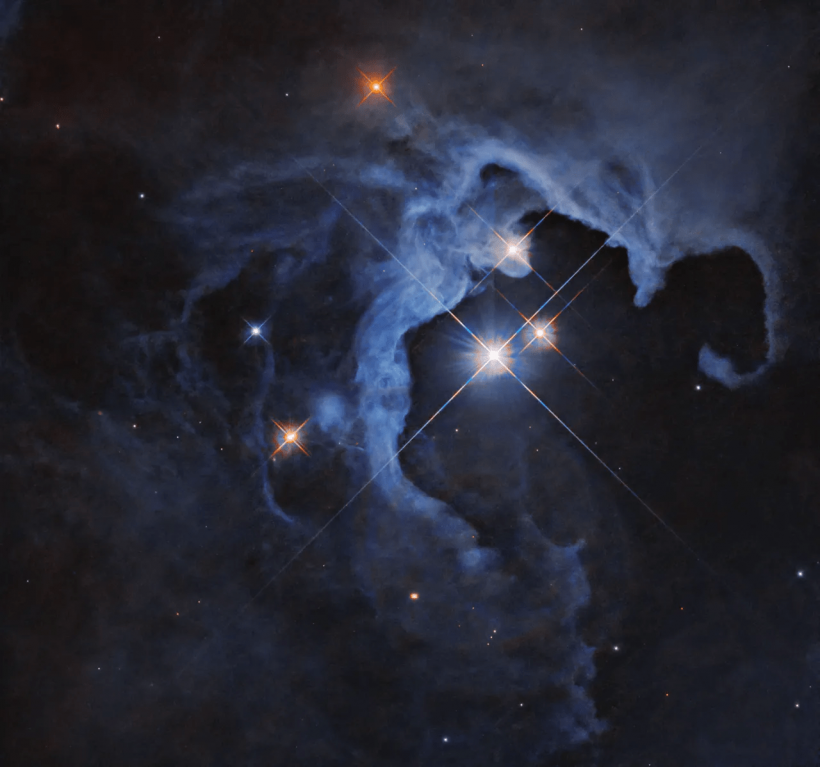NASA's Hubble Space Telescope dazzled with a new image showcasing a trio of radiant stars nestled within the luminous expanse of a reflection nebula.
The celestial display resembles a dazzling cosmic geode, with the stars HP Tau, HP Tau G2, and HP Tau G3 at its heart.

(Photo: NASA, ESA, G. Duchene (Universite de Grenoble I); Image Processing: Gladys Kober (NASA/Catholic University of America))
The T Tauri Stars
Among these, HP Tau stands out as a T Tauri star - a young, variable star undergoing the early stages of evolution towards becoming a hydrogen-fueled star akin to our Sun.
These T Tauri stars typically range below 10 million years in age, considerably younger than our Sun, which is approximately 4.6 billion years old. NASA noted that they often remain enshrouded within the dusty clouds of their birth.
Variable stars like HP Tau exhibit fluctuations in brightness over time, attributable to various dynamic processes within their formation environment. The irregular changes can stem from the inherent instability of young stars, including fluctuations within the surrounding accretion disk of gas and dust, material accretion onto the star's surface, and flares.
Additionally, periodic variations in brightness may arise from the cyclic appearance and disappearance of enormous sunspots.
Surrounding these stars is a captivating cloud of gas and dust, illuminated by the reflected light emanating from HP Tau and its companions. Unlike emission nebulae that radiate light independently, reflection nebulae derive their luminosity from the reflected light of nearby stars, resembling fog aglow with the beams of a car's headlights, according to NASA.
HP Tau's stellar ensemble resides roughly 550 light-years distant in the Taurus constellation. Hubble's observation of HP Tau was part of a broader study into protoplanetary disks - circumstellar disks of material around stars that gradually aggregate into planets over extended time spans.
The image features a triple star system, with the three distinct stars prominently visible at the core, encircled by a vast arcing reflection nebula. These nebulae scatter the light from adjacent stars instead of emitting light like other cosmic nebulae dispersed across the Universe.
In the cosmic realm, reflection nebulae consist of interstellar dust clouds reflecting the luminance of neighboring stars. Although insufficient to ionize the gas within the nebulae for emission, the radiant influence of nearby stars is potent enough to scatter sufficient light, according to NASA.
Reflection nebulae may also serve as fertile grounds for star formation-a testament to the cycles of stellar birth and evolution occurring across the vast expanses of the Universe.
Read Also: NASA Hubble Space Telescope Resumes Scientific Mission, But TESS' Exoplanet-Hunting in Limbo
Hubble Views a Galaxy Hosting a Voracious Black Hole
In related celestial news, Hubble dove into the heart of a galaxy hosting a voracious black hole, unveiling a mesmerizing view of NGC 4951 situated within the Virgo constellation around 50 million light-years away.
NGC 4951, categorized as a Seyfert galaxy, boasts spiral arms enveloping an energetic galactic center housing an active galactic nucleus (AGN). Seyfert galaxies are distinguished by their highly energetic cores, fueled by supermassive black holes lurking within its core.
Read more about this story here.
Related Article: NASA's Hubble Space Telescope Captures 'Butterfly Nebula' In Stunning Motion | Fun Facts About This Beautiful Space Butterfly






